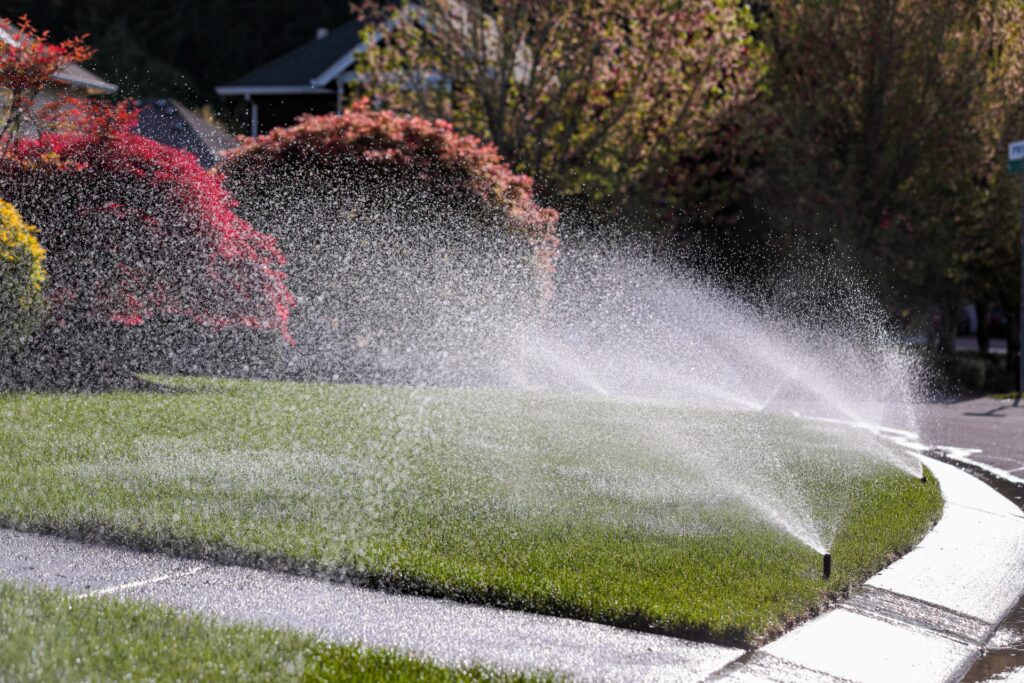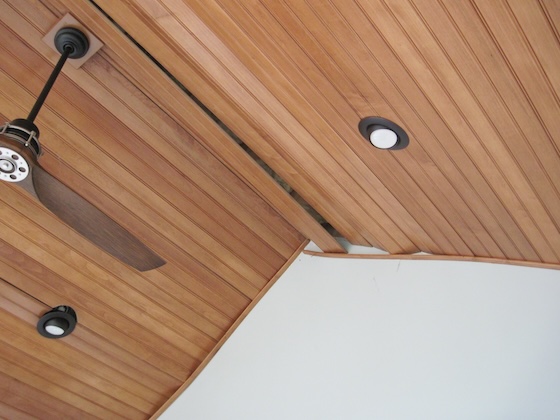
Watering Tips For Denver Homeowners
Watering 101…No Need To Over Complicate Things!
Watering your lawn and landscape is not complicated…Water “infrequently and heavy”… it is as simple as that.
If you can abide by that rule of thumb, you will be successful in the art of watering your lawn and landscape!
If you just cannot bring yourself to follow such a simple philosophy, then I will see if I can gently teach you so that you will be successful at having a thriving, healthy landscape none the less!
In the “Olden Days” homeowners would water their lawns and landscapes using something called a garden hose if they watered at all. Lush green, vibrant lawns were a rarity and prospering landscapes few and far between with pretty much only overgrown Junipers being the plant of forced choice!
Then someone had a brainstorm and thought what if you could have an automated irrigation system so that you would not have to waste your days pulling garden hoses (Oh, the pain!) and then have it buried in the ground so that it would remain out of sight when not in use…Bring in the Engineers and Marketing Gurus!
Fast forward to today and you will find more landscape irrigation technology that is on a level to fascinate NASA and to completely befuddle many a homeowner!
As we all know, technology is wonderful when it is working correctly and if you know how to work with it and make adjustments!
Do not worry, I am not going to go into a long drawn out, boring dissertation on how to set up all the technological aspects of your irrigation system. After all, that is why many of you hire Denver Sprinkler and Landscape, Inc. in the first place!
And yes, as always, we can be reached when needed for those ill-tempered irrigation controllers at either [email protected] or 303.993.8717.
What I am going to attempt to do is walk through some common sense ways to look at watering your landscape. Rather simple and uncomplicated!
Your Lawn
First off, let us consider watering your lawn. That is the landscape element that most homeowners focus on and spend lots of money in trying to out do their neighbors!
Your lawn thrives when it has enough moisture to grow as it is capable of. It does not like to be drowned nor does it appreciate being left to wither similar to that straggly vine of a Philodendron on an office shelf that no one has watered apparently in decades but still attempts to survive!
Just like when you yourself exercise heavily, quenching your thirst is best achieved through downing a very large bottle of water and not in the form of Grandma’s small Orange juice glass (AKA Jelly jar)!
You quench your thirst then off you go to recuperate. The same is true for your lawn. Quench its thirst with a large amount of water, then let it recuperate. Easy enough?
But how much is enough to quench your lawns thirst…? That to is simple.
For our area, your lawn, even if it is a more waterwise variety appreciates between approximately 1-1 3/4” of water per week throughout most of the growing season. If we get rain or have cooler temperatures maybe a little less or if we have a scorching summer maybe a little more.
More waterwise grass types, once established and mature can truly look great on far less water but you need to experiment on “pushing” your waterwise lawn to make do on less. You simply reduce the amount of water you provide by adjusting your controller down approximately every two weeks or so. Once your waterwise lawn seems to be stressing somewhat, you increase the water to your previous setting and it should respond well while saving you money as intended!
Whether you are old school (It’s OK!) and utilize a garden hose with an arsenal of sprinkler types to coordinate with your lawns layout or you have succumbed to technology and have a state of the art automated irrigation system, you need to measure how much you are actually providing your lawn on a weekly basis.
One simple method of measuring is actually old school as well! You simply set out several empty straight sided containers set vertically for accuracy and measure how much water those containers have collected when you turn the hose off or your system stops. Tuna cans, soup cans, coffee cans, or even straight sided coffee cups work great for this!
Be sure to set the containers throughout the entire spray pattern. This will ensure you get an accurate reading on whether you have equal amounts or more or less water hitting certain areas within the target area.
Do this for all area/zones and document your findings for each area keeping a copy with the controller if you have one.
So how much should you apply at one time?…My suggestion is to apply between ½ to ¾” plus or so twice per week. That is basically “infrequent, heavy” watering which allows your lawn to recover well and permits your lawns roots to chase or follow, so to speak, the water down deep into the soil as it penetrates. This alleviates lazy roots that rely on frequent, light, surface watering’s resulting in having little root depth that contributes to your lawns stressing the moment the slightest hot, dry spell occurs.
This recommendation will naturally vary should you have slopes and other grade issues to contend with.
You will be very surprised at just how much time it takes to fill those containers ½-3/4” plus or so at one time!
For the genius automated irrigation aficionado’s, try starting at 15-20 minutes for popup head zones or 30-45 minutes for rotor head zones adjusting accordingly upward or down to achieve the amount of water per timeframe.
In cases where you utilize some form of spray for your landscape beds, utilize these methods as well to begin with. Once again, “infrequent, heavy” watering is best!
Your Landscape
Once again, whether you elect to water your valuable landscape plants by hand or through an automated irrigation system the concept is similar to watering your lawn…”Infrequent, heavy” watering is the best answer.
When plants are being installed within your landscape, they should have what appears to be a reasonably sized, depressed, saucer like depression or basin around them. This depression or basin like area acts as a bowl of sorts keeping water contained around the rootball area better than without such a basin like watering ring. Without the basin, water would tend gravitate away from the rootball zone especially on any degree of slope. The basin contains the water thereby focusing the water downward into and around the rootball where the plant can utilize the soaking.
As plants age this bowl or depression becomes less critical as the feeder roots (Not the structural roots) run out approximately 25% beyond the canopy (The leafy top area) where nutrients and moisture are absorbed.
With automated drip irrigation it is vitally important to be sure that the layout of emitters is set at and out beyond what is termed the dripline of the plant. The dripline is described as an imaginary vertical line dropping downward from the edge of the plants canopy to the ground. As mentioned previously, when a plant matures, its feeder roots tend to exist as far out as 25% beyond the canopy or dripline. This is where you want to focus your watering and feeding attention.
Newly installed plants will many times have drip irrigation emitters installed directly at the base or trunk of the plant. That may be effective for the short term but over time, the drip tubing and emitter layout should be reviewed and adjusted accordingly to be certain water is being supplied where it is best utilized.
Those little emitters protruding from your drip irrigation line are color coded for the amount of water they emit or drip per hour. It is important to know how many you have around each plant so as to be able to judge the amount of water a plant is getting in a given cycle.
It is important to understand that you are attempting to water the entire rootball of a plant thoroughly and then allowing the soil to dry out somewhat. Constantly keeping the soil saturated depletes the oxygen in the soil and the plant basically suffocates. More plants are lost typically to excessive water than not enough. Trees located in lawn areas are very susceptible to drowning.
Keep in mind that the deeper down into the soil you go, the hot dry temperatures do not affect the amount of moisture present as it does on the surface. It is similar to how cool your basement stays in the hot summer as compared to the upstairs. A one time per week thorough soaking of your plants rootball will suffice nicely. Far too many landscape contractors recommend watering your trees and shrubs 3-4 times per week when in truth, a one time deep, thorough watering is best.
For those that prefer to water their plants by hand, which by the way can be considered rather therapeutic, try to keep the water off of the foliage itself and directed to the soils surface covering the entire drip line area of the particular plant. It is best to have the hose emitting a light to moderate flow.
For those that can remember when it considered acceptable to drink from a garden hose, this light to moderate flow would make it difficult to get a thirst quenching drink.
Set this way, the water will be able to soak in more efficiently rather than running off in all directions voiding the value of watering you are trying to accomplish.
If you can relate the amount of water you are providing your landscape plants in terms of “1 Gallon Milk Jugs” you should be able to get a visual sense of providing a heavy drink of water for your plants. With watering heavily once, possibly twice per week for smaller perennials and groundcovers, you should be rewarded with a healthy, vigorous landscape.
As a side note, for those that simply believe that “More water and watering more often is better”…The symptoms of applying heavy amounts of water too frequently are very similar to that of too little water! Yellowed, withered leaves apply to both scenarios. So provide lots of water but only infrequently to do your plants well!
Another Interesting Article
How To Avoid Costly Irrigation Repairs by Temporarily Shutting Down Your Irrigation System
Call Us To Schedule An Appointment
(303) 351-5972
Watering 101…No Need To Over Complicate Things! was first seen on https://denversprinklerservices.com/





More Stories
Why Should We Think About Our Winter Gardens Right Now?
5 Reasons You Need Snow Removal Services
Green Industry Veteran Nick Jiannas Joins Kress Commercial